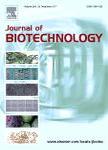版权所有:内蒙古大学图书馆 技术提供:维普资讯• 智图
内蒙古自治区呼和浩特市赛罕区大学西街235号 邮编: 010021

作者机构:Univ London Imperial Coll Sci Technol & Med Dept Chem Engn Ctr Proc Syst Engn London SW7 2AZ England UCL Dept Biochem Engn Adv Ctr Biochem Engn London WC1E 7JE England
出 版 物:《JOURNAL OF BIOTECHNOLOGY》 (生物技术杂志)
年 卷 期:2014年第179卷第1期
页 面:17-25页
核心收录:
学科分类:0710[理学-生物学] 071010[理学-生物化学与分子生物学] 07[理学] 0836[工学-生物工程]
基 金:UK Engineering 82 Physical Sciences Research Council (EPSRC) for the EPSRC Centre for Innovative Manufacturing Emergent Macromolecular Therapies consortium of industrial and governmental users EPSRC [EP/I033270/1] Funding Source: UKRI
主 题:Biopharmaceutical manufacture Stochastic discrete-event simulation Decision tree classification Multivariate data analysis Data mining
摘 要:Higher titre processes can pose facility fit challenges in legacy biopharmaceutical purification suites with capacities originally matched to lower titre processes. Bottlenecks caused by mismatches in equipment sizes, combined with process fluctuations upon scale-up, can result in discarding expensive product. This paper describes a data mining decisional tool for rapid prediction of facility fit issues and debottlenecking of biomanufacturing facilities exposed to batch-to-batch variability and higher titres. The predictive tool comprised advanced multivariate analysis techniques to interrogate Monte Carlo stochastic simulation datasets that mimicked batch fluctuations in cell culture titres, step yields and chromatography eluate volumes. A decision tree classification method, CART (classification and regression tree) was introduced to explore the impact of these process fluctuations on product mass loss and reveal the root causes of bottlenecks. The resulting pictorial decision tree determined a series of if-then rules for the critical combinations of factors that lead to different mass loss levels. Three different debottlenecking strategies were investigated involving changes to equipment sizes, using higher capacity chromatography resins and elution buffer optimisation. The analysis compared the impact of each strategy on mass output, direct cost of goods per gram and processing time, as well as consideration of extra capital investment and space requirements. (C) 2014 The Authors. Published by Elsevier B.V.